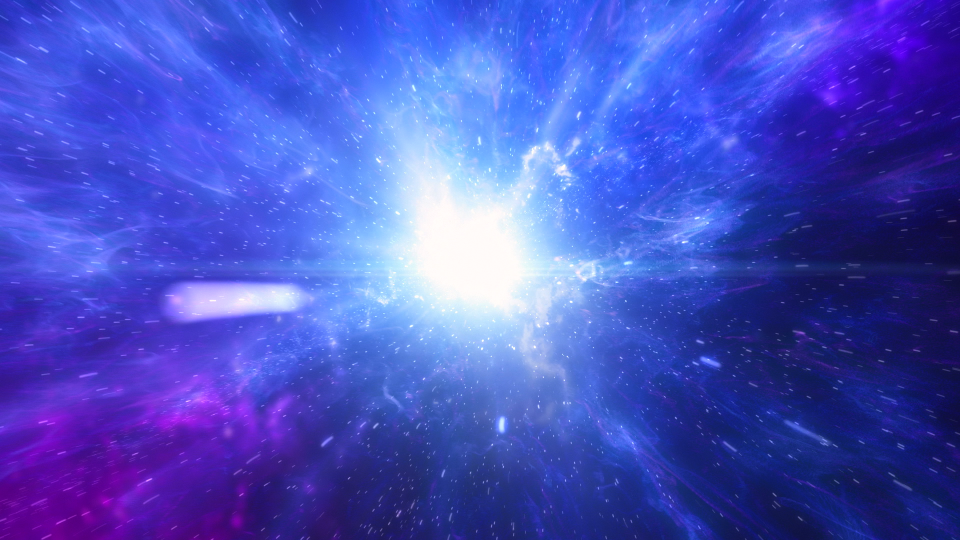A woman sued NASA to keep a vial of moon dust. She might have made a huge mistake.

Bouncing across the moon’s bleak, gray surface, 12 astronauts gathered hundreds of pounds of moon rock between 1969 and 1972.
Sometimes, they lifted blocks as heavy as 25 pounds (in Earth weight) off the lunar surface. Other times, they raked the lunar floor to collect fine, meteorite-smashed soil. In total, NASA flew 842 pounds of extraterrestrial rock back to Earth. Most of it has since been sealed away in freezing vaults.
Yet, Laura Cicco, of Tennessee, is sure she has a vial of moon dust. She's so confident, in fact, that she recently sued NASA for her right to keep this vial of purported lunar dirt before the space agency can take it away.
SEE ALSO: NASA finds organic matter on Mars, but sorry, that doesn't mean it's aliens
Cicco and her attorney were spooked by an event in 2011, in which a 74-year old woman attempted to sell rice grain-sized bits of moon rock to federal agents in a Denny's parking lot, during a bizarre sting operation. The woman had initially contacted NASA, seeking a buyer for her moon rocks, which then escalated to an undercover operation.
Cicco maintains that astronaut Neil Armstrong, the first person to step foot on the moon, somehow acquired or took a vial of moon dust from the government and gifted it to her when she was a child, along with an autograph. Armstrong and Cicco’s father, she said, were both members of a secret pilot’s club, the Quiet Birdmen.
But could whatever is in that vial really be dust from the moon?
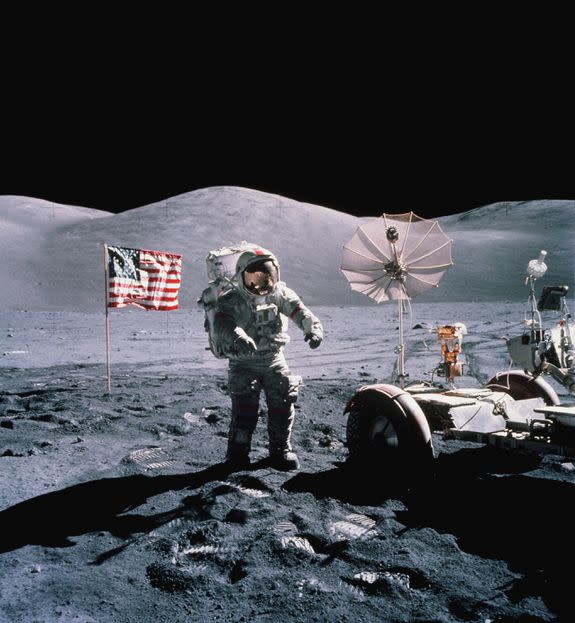
Image: NASA/Roger Ressmeyer/Corbis/VCG via Getty Images
While Cicco may have been gifted an autograph from the legendary Armstrong, it’s more doubtful that he actually handed over some lunar dirt.
Testing the sample
Cicco's attorney sent the vial to the Bruker Corporation, a lab that uses specialized equipment to analyze materials.
Tom Tague, a chemist and applications manager for the lab, performed two tests, both involving X-ray analysis. One test failed to produce any useful results, either way. "It wasn't helpful," said Tague, in an interview.
But the other, called X-ray diffraction spectroscopy, "was immensely helpful," said Tague, who noted he had previously tested purported lunar substances for private individuals. Specifically, Tague found the minerals were "consistent with lunar soil in the highlands of the moon."
"To summarize my findings, you couldn’t rule out the sample was from the moon," said Tague, who had the benefit of NASA literature outlining the mineralogy of different areas on the lunar surface.
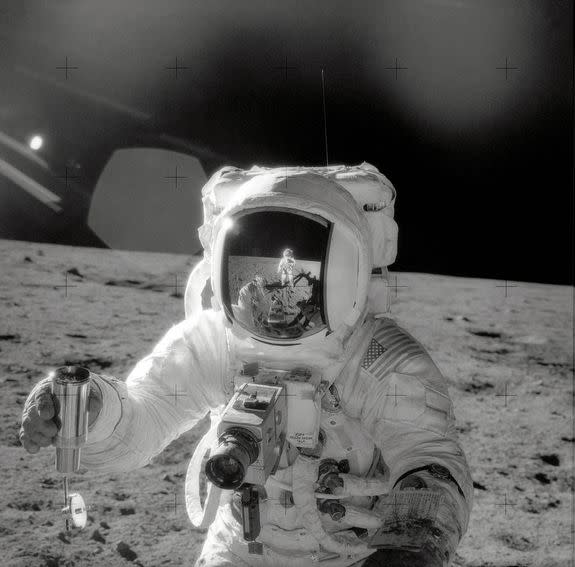
Image: nasa
"That's a significant find, at least in my opinion," he said.
The results, showing the soil had consistencies with dirt from the lunar highlands, were presented as evidence in the lawsuit, along with the autograph and the vial.
But herein lies a problem: Neil Armstrong never visited the lunar highlands. The Apollo 11 spacecraft famously landed in the Sea of Tranquility, a low-basin on the moon, blanketed in ancient lava.
"That's not the most ringing endorsement of it being from the moon," said Robert Pearlman, a space historian who has closely followed this moon rock case and others, in an interview.
So, what's going on here?
Cicco’s attorney, Christopher McHugh, has little doubt about Tague's analysis, noting that he’s “extremely confident” in the results.
“Tom is world reknown,” said McHugh, over email. “He was involved with authentication of the lost Da Vinci painting that relatively recently sold for over $450 million.”
There’s little question that Tague, who has a doctorate in chemistry and is an expert is elemental analysis, soundly analyzed the material.
But if this substance were truly dirt from the moon, the results would almost certainly be conclusive — not just consistent with rock from a certain region of the lunar survace.
When inspected closely, moon rocks and dust are quite distinct from anything on Earth.
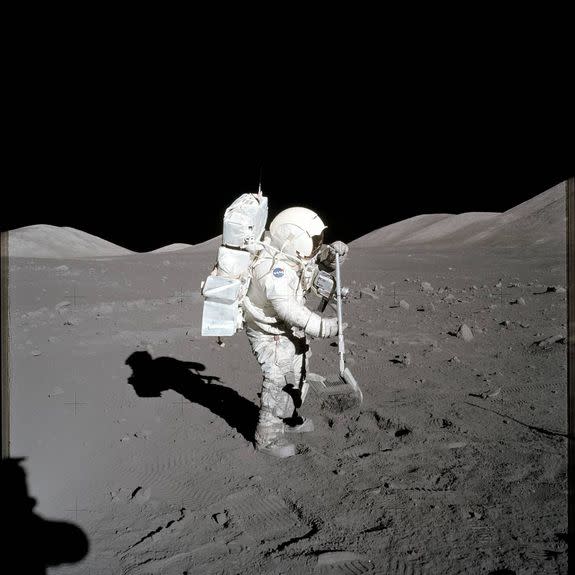
Image: nasa
"These differences should make it relatively easy to tell if this soil sample is indeed lunar," Walter Kiefer, senior staff scientist at the Lunar and Planetary Institute, said in an email.
For one, said Kiefer, volcanic rock on the moon, known as basalt, has "much more iron" than similar volcanic rocks on Earth. What's more, the specific rocks Neil Armstrong and Apollo 11 brought back to Earth are enriched in a specific element, titanium, which then forms another specific mineral, ilmenite.
Although these are strong clues, Kiefer underscored that he had no opinion about the specific samples in question, having not seen Bruker's chemical analysis.
Moon rocks are unique from Earth’s dirt in other ways, as well.
Moon dirt would show evidence of "space weathering," as the surface has been bombarded with tiny meteorites and solar wind (charged particles from the sun) for billions of years, Ralph Milliken, an assistant professor in the Department of Geological Sciences at Brown University, said via email.
"These types of effects would not be present in terrestrial [Earth] materials and are not easily reproduced in a laboratory setting," said Milliken.
"I would think that with the right kind of measurements and people with experience in lunar materials it would be pretty straightforward to correctly identify whether or not a sample is lunar soil," Milliken added.
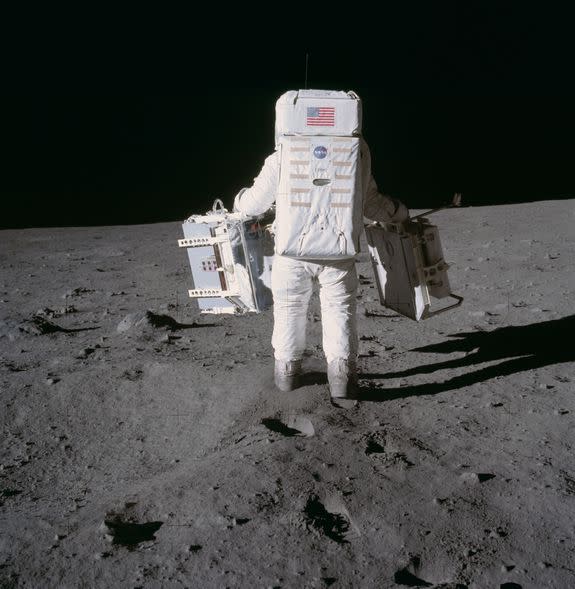
Image: NASA
The substance in the vial could possibly be fake lunar dust, known broadly as “lunar simulant,” but this stuff is not easy to make.
"Another way to think of this is that if it were easy to make ‘fake’ lunar soil then there would likely be a lot of people attempting to sell such things, but it is actually very hard to make material that is identical to lunar soil," said Milliken.
There are companies interested in making a soil approximating asteroid and lunar ground, however, that fake dirt is used for research purposes like preparing robots and spacecraft for future expeditions.
So, does NASA own every piece of moon rock on the planet?
While the Outer Space Treaty of 1967, recognized by over 100 countries including the U.S., forbids any nation from claiming any land or celestial body in space, "the taking of (presumably) small quantities of material for scientific purposes has been widely acknowledged as legitimate," Frans Von der Dunk, a space law professor at the University of Nebraska-Lincoln, College of Law, said in an email.
That's why NASA, "‘on behalf of the United States,' can claim ownership over the moon rocks and other small quantities of materials brought back by the various Apollo astronauts," said Van der Dunk.
However, he notes "the legal question indeed becomes trickier" once the rocks get passed around in the U.S. For instance, if it was a legal gift from Armstrong, does ownership pass to another person, and if so, would a state or federal law determine the outcome?
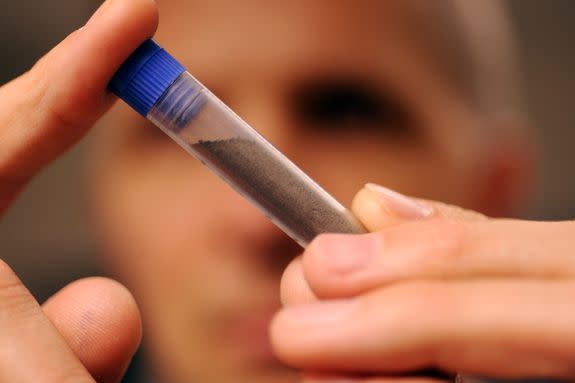
Image: Hyoung Chang/The Denver Post via Getty Images
But most of these questions are moot. NASA has never gifted a moon rock to any one person.
"No president of the United States, no astronauts were presented with one [moon rock]," said Pearlman, the space historian.
In fact, the U.S government has only gifted small bits of lunar material, embedded in acrylic glass balls, to 135 foreign nations and 50 U.S. states.
"So if this woman's story is true, her problem is with Neil Armstrong — because he would have passed off stolen goods to her," said Pearlman, who runs the website collectSPACE.com.
"It's about theft, not so much about the moon — although that’s what makes it so interesting," he added.
McHugh, however, finds it “irritating” that anyone would contend Armstrong took government moon rock without permission.
“Saying that someone took something without authority is a gutless way of saying he stole it,” said McHugh. “If NASA is calling Neil Armstrong a thief then it should just say that. All the evidence I have seen shows he was an American hero who was beyond reproach.”
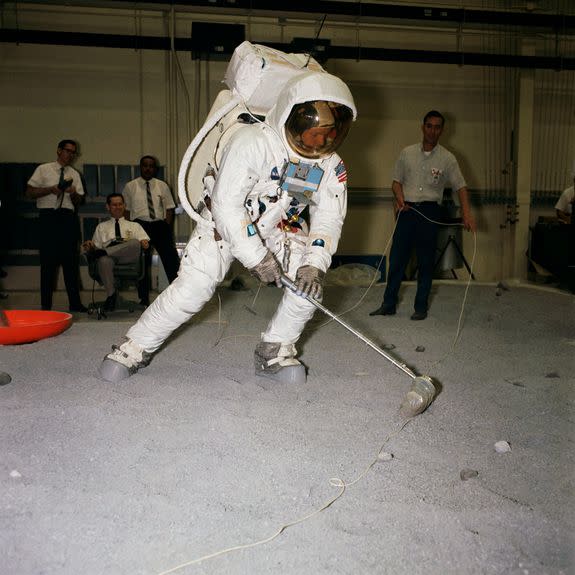
Image: nasa
There are still unaccounted for moon rocks, however, something NASA acknowledged in a somewhat damning government report in 2011.
Of over 140,000 lunar samples and around 23,000 meteorite and other samples, NASA has 26,000 of these space objects out on loan for research and educational purposes. Of these, 517 have been lost or stolen — though it's unclear how many are moon rocks specifically.
It is possible that Cicco obtained some lost or stolen moon dust. However, it appears NASA was completely unaware of her vial for decades.
This lawsuit against NASA, then, has made the space agency well aware of the vial — even if it's unlikely to be moon dust.
"She didn’t have a problem before," said Pearlman.
"Now she does."
WATCH: Ever wonder how the universe might end?
